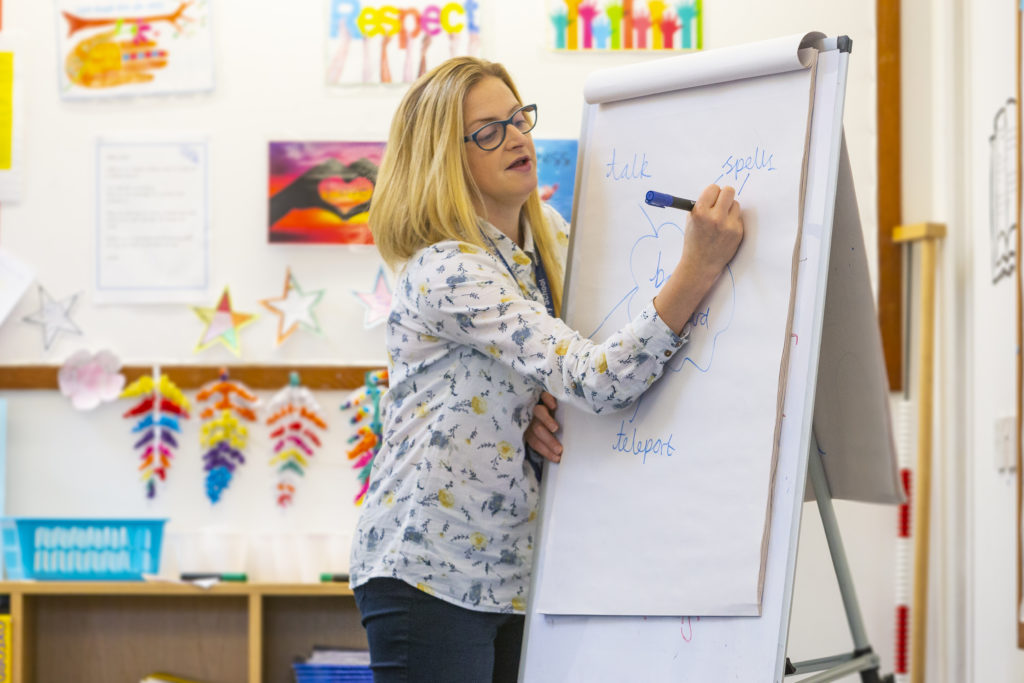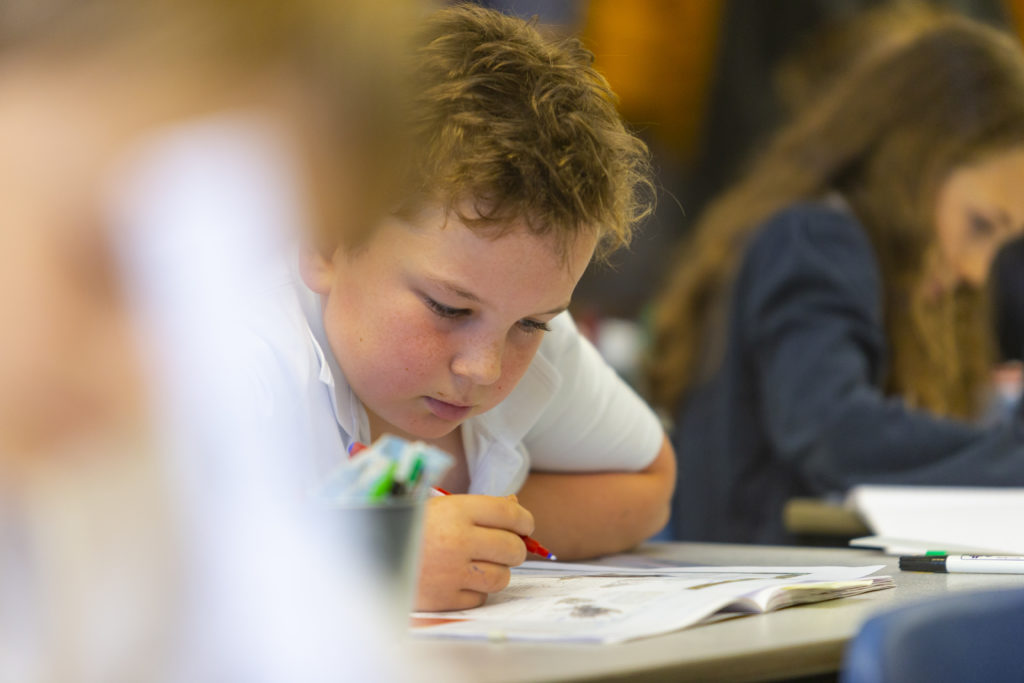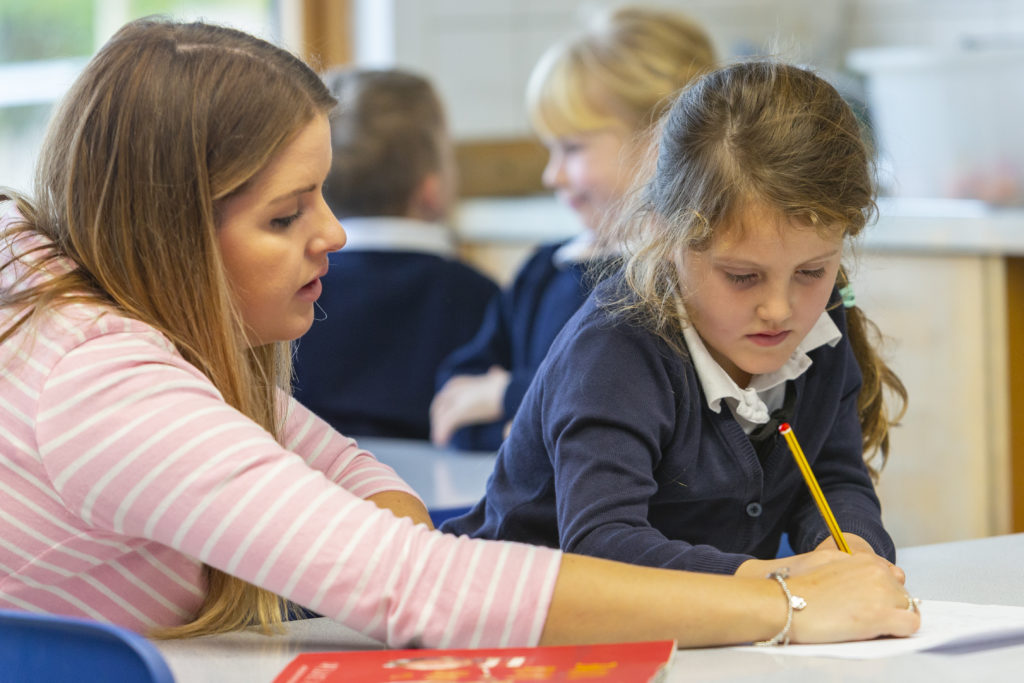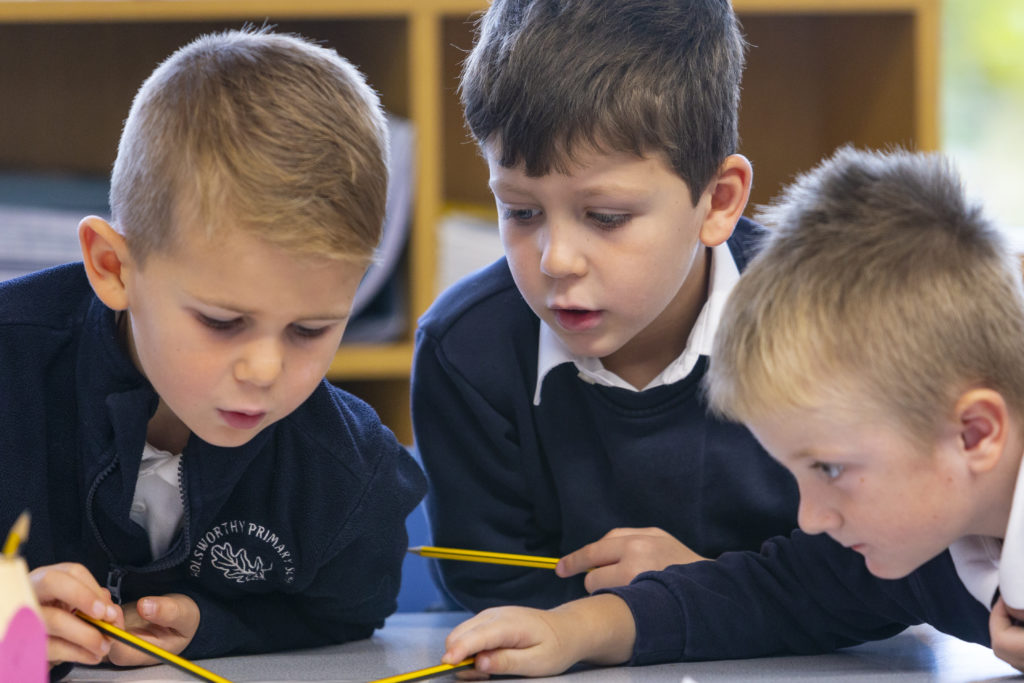Our approach to writing:
Create a school environment where reading is the breathing in, and writing is the breathing out.
‘Fluency in the English language is an essential foundation for success in all subjects. Through studying literature, pupils’ eyes are opened to the human experience; they explore meaning and ambiguity as well as the beauty and power of language. English also has a strong creative and expressive dimension.’ Ofsted 2022

We are a writing school:
- We all have an enthusiasm and love of writing.
- Children build upon skills progressively to develop their proficiency in 2 interrelated areas of writing: transcription (spelling and handwriting) and composition (articulating ideas and structuring them in speech and writing) as they move through our school, viewing themselves as a writer.
- Children can use their own imagination, wide range of subject knowledge and world experiences to compose meaningful pieces of writing.
- Children have opportunities to write for different purposes: ‘to describe, narrate, explain, instruct, give and respond to information, and argue’.
- Children are frequently exposed to high-quality examples, modelled and shared writes to set high expectations and better understand the metacognitive process for writing.
- Children have a clear understanding of the process of writing, and how audience, form, purpose and impact is as important as accurate use of the English language.
- Children are given the opportunity to rehearse, and celebrate writing through oracy.
- Children write to share their ideas, communicate with others and learn from the wider curriculum.
We are a spelling and handwriting school:
- Through Read, Write Inc, our younger children learn the alphabetic code for spelling (encoding), as well as for reading (decoding).
- Fundamental transcription skills (handwriting and spelling) are a critical focus for the early years and key stage 1 to develop fluency in order to reduce the demand on the cognitive load and enable a greater focus on composition as they move through the school.
- Read Write Inc, handwriting and spelling sessions are discretely delivered, alongside high expectations of presentation and editing, to ensure children’s written work is of a high standard.

- In early years and KS1, children spend more time practising composition through oral activities before their transcription becomes fluent.
- Scaffolding such as spelling journals, word banks and phonic sound mats are provided at both whole class and individual level to ensure spelling is prioritised within each lesson.

We are a grammar school:
- Across the school, the function and application of grammar is taught within the context of writing: Teaching pupils grammar as part of writing lessons, emphasises the connections between linguistic features and the effects they can produce.
- Children develop a secure knowledge of English grammar for composition. This enables them to express themselves clearly and creatively through writing showing conscious control.
- For expertise to develop, pupils benefit from direct instruction and modelling, followed by extensive, deliberate practice until they are fluent.
- Our writing sequences are focussed on key texts, and within which rich opportunities are provided to learn and master grammar.
- Colourful semantics is used as a tool to support the teaching of grammar for all children.
We are a Vocabulary school:
See also our Vocabulary and Oracy Curriculum plan.
- Since we know, “Vocabulary is a strong indicator of student success.” (Baker, Simmons, & Kame’enui, 1997), across our school, practitioners actively develop vocabulary – building systematically on pupils’ current knowledge – to increase pupils’ store of words.
- Pupils’ acquisition and command of vocabulary are key to their learning and progress across the whole curriculum
- Within all Writing sequences (and across the entire curriculum), children will be explicitly taught how the tier 1, 2 and 3 vocabulary fits with their current text. They will be encouraged to not only recognise the tiered vocabulary they are immersed in, but will be given the opportunity to expand their knowledge through the use of synonyms and antonyms.

- Children and practitioners take time to develop a broad and deep vocabulary, which then leads to better writing.
- Practitioners make links between known and new vocabulary and discuss the shades of meaning in similar words.
- Children are exposed to word spelling, definitions, synonyms, antonyms, examples, non-examples and visual links. This helps to embed vocabulary into the children’s long-term memory and schemata. This will expand the vocabulary choices that are available to them when they write.
